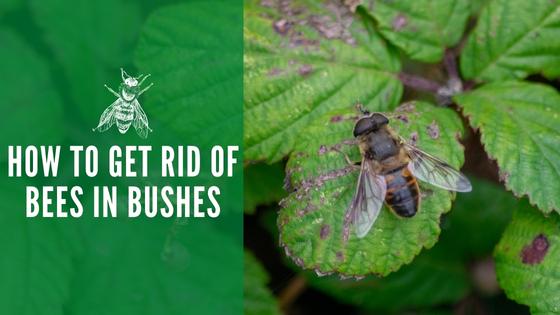Are pesky bees and wasps taking over your garden bushes? I totally get it – these buzzing insects can turn your peaceful backyard into a danger zone. After dealing with multiple wasp infestations in my own garden, I’ve learned the best ways to handle these stinging pests safely and effectively.
Quick Summary
- Identify the type of stinging insects (bees vs different wasp species)
- Use natural deterrents like peppermint oil or soap solutions
- Set up proper traps away from high-traffic areas
- Call professionals for large infestations or bee colonies
- Prevention is key – maintain your yard and seal entry points
Identifying What You’re Dealing With
Before taking action, you’ve gotta know what type of buzzing insect has made your bushes their home. Here’s how to tell them apart:
Bees
- Usually fuzzy bodies
- Generally non-aggressive unless threatened
- Important pollinators – consider relocation instead of elimination
- Often found in hollow trees or ground cavities
Common Wasp Types
- Paper Wasps
- Slender bodies with defined waist
- Build umbrella-shaped open nests
- Reddish-brown to black with yellow markings
- Yellowjackets
- Thick bodies with bright yellow and black stripes
- Super aggressive defenders
- Often nest underground or in dense bushes
- Bald-Faced Hornets
- Larger size with white and black coloring
- Build large enclosed paper nests
- Very territorial and aggressive
Natural Methods to Remove Them
I’ve found these natural solutions work great for smaller infestations
1. Soapy Water Solution
- Mix 2 tablespoons dish soap with water in spray bottle
- Spray directly on nests during early morning or night
- The soap clogs their breathing pores
2. Essential Oil Sprays
Mix in a spray bottle:
- 2 cups water
- 2 drops peppermint oil
- 2 drops clove oil
- 1 drop lemongrass oil
3. DIY Traps
What you'll need:- 2-liter plastic bottle- Sweet liquid (juice or sugar water)- Dish soap- ScissorsSteps:1. Cut bottle top off2. Invert top into bottom section3. Fill 1/3 with sweet liquid + few drops soap4. Place away from seating areasProfessional Control Methods
Sometimes DIY just ain’t gonna cut it. Call the pros when:
- You spot multiple large nests
- Insects are aggressive honey bees (they need proper relocation)
- Nests are in hard-to-reach spots
- You’re allergic to stings
Prevention Tips
Keep those buzzers from coming back
Yard Maintenance
- Trim bushes regularly
- Remove fallen fruit promptly
- Keep garbage bins sealed
- Clean up food/drink spills outside
Natural Deterrent Plants
Plant these around your yard:
- Mint
- Citronella
- Eucalyptus
- Thyme
- Marigolds
Seal Entry Points
Check and seal
- Cracks in walls/foundations
- Gaps around windows/doors
- Holes in screens
- Spaces under eaves
Safety First!
When dealing with stinging insects, always:
- Wear protective clothing (long sleeves, pants, closed shoes)
- Work during early morning or night when they’re less active
- Have an escape route planned
- Keep kids and pets away during treatment
- Keep antihistamines handy
When to Treat
The best time to tackle your bee/wasp problem is:
- Early spring before colonies grow
- Early morning (before 6 AM)
- Cool, cloudy days
- Never during peak afternoon hours
My Final Thoughts
Getting rid of bees and wasps in bushes ain’t always easy, but with the right approach, you can reclaim your yard. Remember – while wasps can be real pests, honey bees are super important pollinators. If you’ve got honey bees, please contact a local beekeeper for safe removal instead of killing them.
Would you like me to explain any part in more detail? I’ve dealt with these situations many times and can share more specific tips based on your particular scenario!

Re: How to get rid of wasps in hedges?
There is an awesome product called Wasp Killer & Nest Destroyer by Blitzem. Its in a black and orange can. Sprays 4m and kills wasps instantly. Bunnings has this product.
How to get rid of wasps in hedges?
- Subscribe to RSS Feed
- Mark Topic as New
- Mark Topic as Read
- Float this Topic for Current User
- Bookmark
- Subscribe
- Mute
- Printer Friendly Page
Pest Control : How to Keep Bees Out of Shrubs
FAQ
What to spray on bushes to keep wasps away?
So, take a cotton ball soaked in peppermint oil and place it near areas where you’ve seen wasps and hornets. You can also add a few drops of peppermint oil to a spray bottle filled with water and use it to spray areas. Cinnamon and cloves are effective in keeping wasps and hornets away as well.
Why are there so many wasps in my bush?
Wasps and yellowjackets are often attracted to trees and bushes infested with aphids or other honeydew-producing insects. Honeydew, a sugary substance excreted by these insects, is a primary food source for wasps and yellow jackets.
How to deal with wasp nest in bushes?
Insecticidal dusts work well in these cases because the wasps pick the dust up as they enter the nest and carry it to the core of the nest. This insecticide contaminates the entire nest and soon all the wasps will die off, normally within one or two days.
Why do I have bees in my bushes?
They occur when a new queen is made in a colony. The new queen’s mother leaves the original colony takes with her a large group of worker bees to find a new home. These bees all fly off as a group and clusters on a tree limb, a shrub, or even on a car’s side mirror, nearly any other suitable space.
